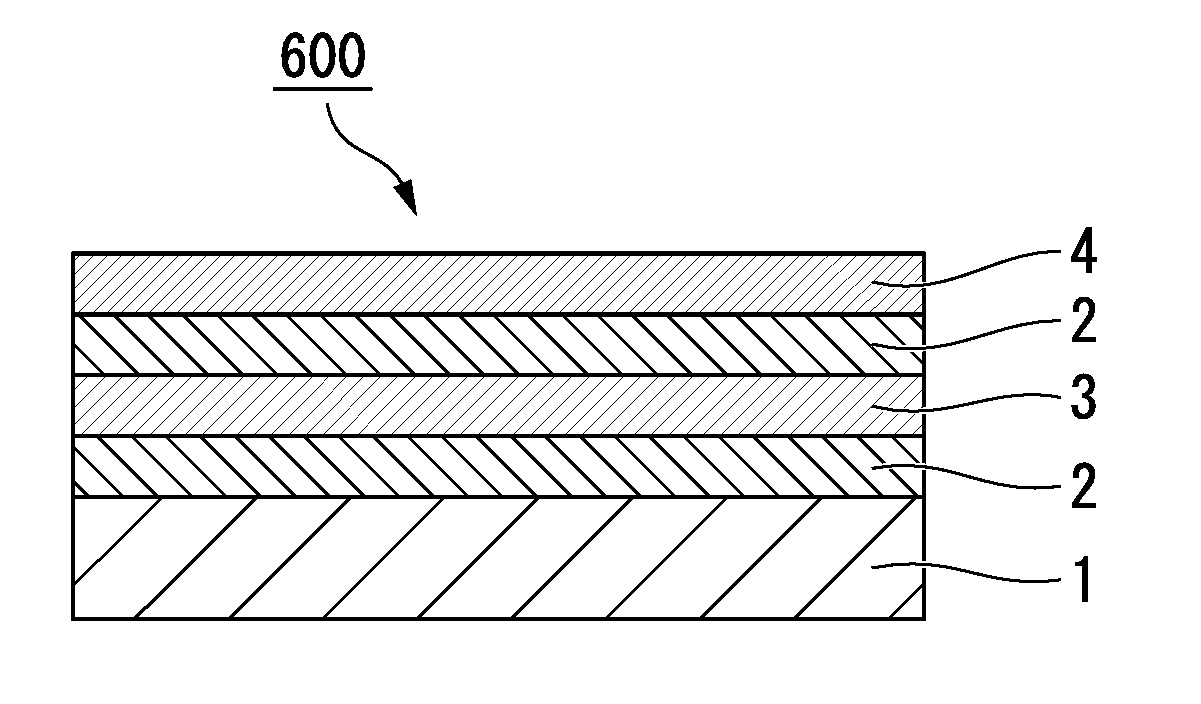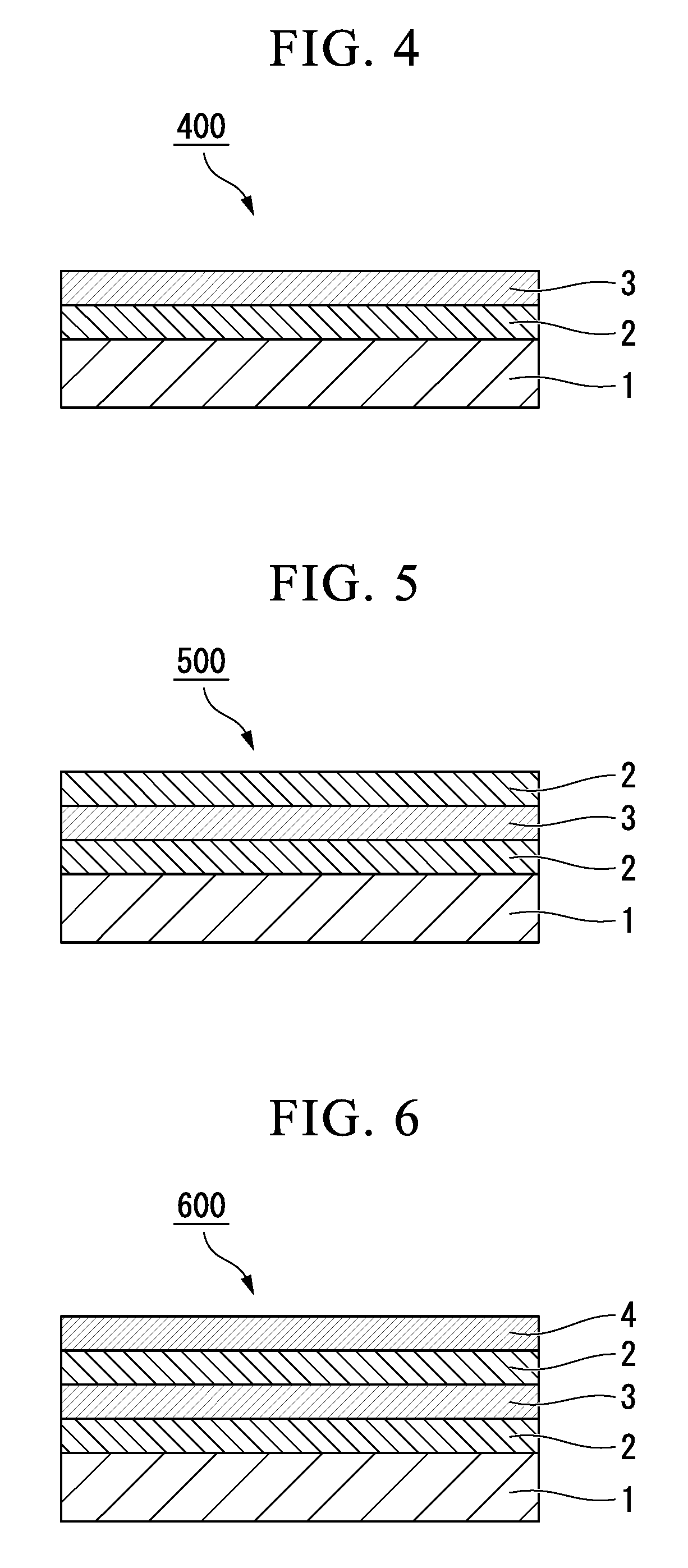Laminated body, method for producing the same, and molded container
a technology of laminated body and molded container, which is applied in the direction of synthesized resin layered products, record information storage, packaging, etc., can solve the problems of wasting resources, wasting resources, and countless irregularities on the surface of paper base, so as to achieve excellent strength, reduce waste, and effectively utilize natural resources
- Summary
- Abstract
- Description
- Claims
- Application Information
AI Technical Summary
Benefits of technology
Problems solved by technology
Method used
Image
Examples
production example 1
[0086]30 g of softwood kraft pulp were dipped in 600 g of water, and was dispersed by a mixer. 0.3 g of TEMPO that was dissolved in advance in 200 g of water was added to pulp slurry after the dispersion, 3 g of NaBr was added and was further diluted with water, and the whole was made up to 1400 mL. The inside of a system was kept at 20° C., and an aqueous sodium hypochlorite water solution was measured and was added dropwise so as to become 10 mmol with respect to 1 g of cellulose.
[0087]Although pH began to fall from the start of the dropwise addition, pH was kept at 10 using a 0.5 N aqueous sodium hydroxide solution. After two hours, 30 g of ethanol was added when 0.5 N sodium hydroxide became 2.5 mmol / g, and the reaction was stopped. 0.5 N hydrochloric acid was added to the reaction system, and was made to fall to pH 2. When conductivity titration was performed using 0.1 N sodium hydroxide using the automatic titrator (AUT-701 manufactured by DKK-Toa Corporation) in which oxidize...
production example 2
[0088]30 g of softwood kraft pulp was dipped in 600 g of water, and was dispersed by a mixer. 0.3 g of TEMPO that was dissolved in advance in 200 g of water was added to pulp slurry after the dispersion, 3 g of NaBr was added and was further diluted with water, and the whole was made up to 1400 mL. The inside of a system was kept at 20° C., and a sodium hypochlorite water solution was measured and was added dropwise so as to become 10 mmol with respect to 1 g of cellulose.
[0089]Although pH began to fall from the start of the dropwise addition, pH was kept at 10 using a 0.5 N aqueous sodium hydroxide solution. After three hours, 30 g of ethanol was added when 0.5 N sodium hydroxide became 2.8 mmol / g, and the reaction was stopped. 0.5 N hydrochloric acid was added to the reaction system, and was made to fall to pH 2. After oxidized pulp was filtered and repeatedly washed with 0.01 N hydrochloric acid or water, oxidized pulp was obtained. Then, when conductivity titration was performed...
production example 3
[0090]30 g of softwood kraft pulp was dipped in 600 g of water, and was dispersed by a mixer. 0.3 g of TEMPO that was dissolved in advance in 200 g of water was added to pulp slurry after the dispersion, 3 g of NaBr was added and was further diluted with water, and the whole was made up to 1400 mL. The inside of a system was kept at 20° C., and a sodium hypochlorite water solution was measured and was added dropwise so as to become 10 mmol with respect to 1 g of cellulose.
[0091]Although pH began to fall from the start of the dropwise addition, pH was kept at 10 using a 0.5 N aqueous sodium hydroxide solution. After 4 hours, 30 g of ethanol was added and the reaction was stopped. 0.5 N hydrochloric acid was added to the reaction system, and was made to fall to pH 2. After oxidized pulp was filtered and repeatedly washed with 0.01 N hydrochloric acid or water, oxidized pulp was obtained. Then, when conductivity titration was performed using 0.1 N sodium hydroxide using the automatic t...
PUM
| Property | Measurement | Unit |
|---|---|---|
| diameter | aaaaa | aaaaa |
| diameter | aaaaa | aaaaa |
| diameter | aaaaa | aaaaa |
Abstract
Description
Claims
Application Information
 Login to View More
Login to View More - R&D
- Intellectual Property
- Life Sciences
- Materials
- Tech Scout
- Unparalleled Data Quality
- Higher Quality Content
- 60% Fewer Hallucinations
Browse by: Latest US Patents, China's latest patents, Technical Efficacy Thesaurus, Application Domain, Technology Topic, Popular Technical Reports.
© 2025 PatSnap. All rights reserved.Legal|Privacy policy|Modern Slavery Act Transparency Statement|Sitemap|About US| Contact US: help@patsnap.com



